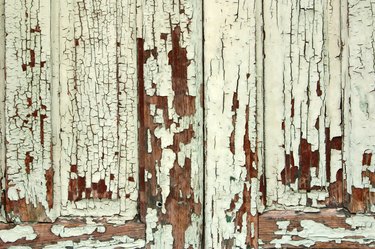
Do-it-yourselfers frequently may need to repair wood items in or around their homes. A wide variety of products are available for this purpose, but not all of them are suitable for tough jobs, such as those that may require re-drilling into the repaired area. For these tasks, homeowners will require a heavy-duty compound that dries to a hard surface, yet has the same "give" in it as wood to allow for drilling.
Uses for Wood Filler
Video of the Day
Wood flooring often can be subject to splitting and cracking, as well as gouges and dents from heavy furniture. This type of damage can be repaired by applying wood filler to the area and allowing it to dry. Then, the area is sanded level with the rest of the surface. Wood furniture can suffer from drying and splitting of the grains, which also can be repaired with wood filler. However, wood filler products do not accept stains the same way as the wood itself, so you may notice a difference in the repaired section.
Video of the Day
Simple Wood Fillers
Wood filler are made of many different types of materials. A very simple wood filler can be made of sawdust from the same wood as the piece under repair, mixed with white or yellow carpenter's glue. Linseed and chalk or ground limestone is another tried and true filler for wood repairs. Cellulose-based fillers use wood fiber and water-based or solvent-based binders. Gypsum-based fillers use a mineral powder with a crystalline filler that will not pull away from the sides after drying.
Two-Part Epoxy Wood Fillers
Epoxy type fillers use a resin and a hardener. These two compounds then are mixed together for a hard and durable filler material that can be drilled when completely cured, according to the Old House Journal Online. These fillers are extremely stable once dried and do not shrink or expand within the wood. Often, removing old, rotted wood from the area is not required. The epoxy simply is applied to the surface or injected into the wood through drilled holes. When it dries, it leaves a hard, workable material that keeps out moisture and insects.
Drilling Holes in Wood Filler
One of the advantages of using an epoxy wood filler is that it dries to a hard surface that can be sawn, drilled, screwed or sanded without cracking or deterioration. However, it is important to mix the two-part formula accurately to achieve good results. Epoxies may use equal portions of the resin and hardener. Other formulas may require a different mixture of components. Epoxy wood fillers must dry for at least 24 hours or more to cure the material properly for further operations.